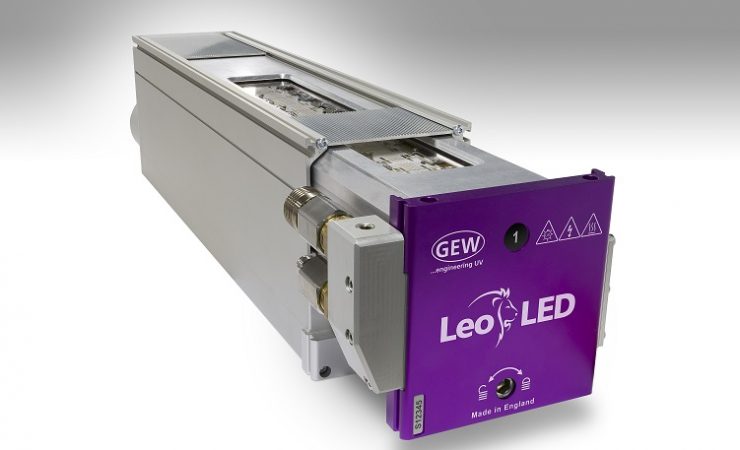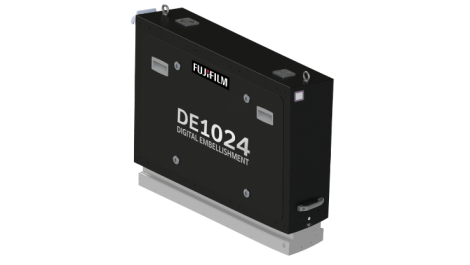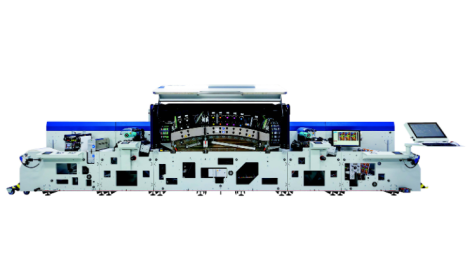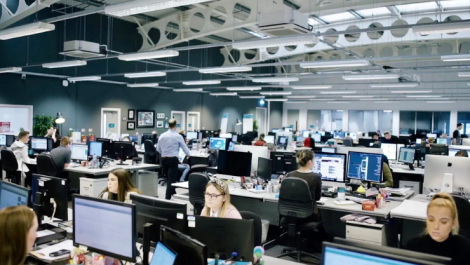As printing and converting equipment gets faster, more efficient, and responds to market demands for more environmentally friendly production, so the curing market is having to evolve.
Non-profit trade association RadTech sees conventional methods of drying inks and coatings, from water- to solvent-based, continuing as the norm in packaging, although UV and electron beam (EB) continue to grow. EB, for example, is finding a home for flexible packaging, notes Ralph Giammarco, vice president at S-One Labels & Packaging (S-OneLP).
‘While EB has a relatively significant upfront capital investment, the value proposition has resulted in gaining popularity among leading flexible packaging converters and brands. This includes speed of turnaround, low variable cost, a safer finished product, a high-quality look and feel, a greener footprint and material options, performance enhancement due to crosslinking the components, and greater options due to the cold process being great for thin films.’
When it comes to hybrid printing, GEW (UV) director Robert Rae says curing systems combining multiple technologies are ‘very popular’; arc curing for inkjet, and UV LED on flexo/screen stations. LED, he continues, is the de facto choice for pinning of UV inkjet, while tonerbased systems only see UV curing used in ‘embellishing’ machines. In digital printing, LED is being investigated as a final cure option, he adds, but aside from single colour inkjet, ‘this is yet to see widespread adoption.’
He goes on, ‘The biggest growth area is undoubtedly UV LED. GEW has trebled its LED business in the past year alone. The traditional barrier to LED has been the capital investment cost but with recent technological advances, some manufacturers have been able to reduce the cost of their LED systems. The improved performance and faster ROI of LED systems is driving up adoption even in Europe, which has been very conservative and sceptical in the adoption of LED up until now, with the exception of some pockets, such as Italy and Poland.’
GEW’s new LeoLED UV lamphead is aiming to ‘transform the economics of UV’ by offering LED technology at a highly competitive price, at the same time boasting a 40% improvement in irradiance when compared to earlier models.
‘LEDs offer higher power and faster curing to support the label and packaging market’s fastest printing speeds, while UVA radiation penetrates deep for thick screens or laminating and foiling processes,’ says Mr Rae. ‘Increasingly, LED inks are able to outperform arc inks on speed and cure quality. However, there is significant inconsistency on performance across the market, with some LED inks curing much better than others.
‘With LED, unsupported films, shrink sleeves and other delicate materials can be processed without heat damage. There are also no moving parts in an LED lamphead, which reduces maintenance, and there is no warm-up/cool-down cycle, meaning less UV related downtime and increased press productivity.’
Mr Giammarco confirms, ‘Customers are embracing the smaller footprint that LED allows for, along with reduced downtime and lower cost of ownership. The challenge from the coatings side is the curing window is different than that of mercury bulbs and it requires more communication and some intricate product development to create equally effective functional coatings to what is available with standard UV. That is happening and the systems are growing in popularity and performance. It is not mainstream yet, however the projections we see show that this will be the standard in at least narrow web within the next five years.’
Hotting up
He continues, ‘The demand for shorter runs and a wider range of functional materials, such as the increased demand for processing new to the world films, adhesives, and coatings made of bio resins, is changing the technical demands on converters. The challenges range from the demand for fast turnaround, to more customised designs, to shorter runs for boutique and new brands, to learning about and processing new materials with radically different process parameters when compared to the standards used for decades.’
Honing in on EB, Mr Giammarco explains, ‘Since S-OneLP’s inception, we have had our eye on EB as a vital tool for optimal flexible packaging finishing, thanks to its fast and clean results, and safer finished film product. We discovered that we could help the industry by creating a complete EB system. We partnered with CDA and PTI to develop CatPak, a 30in complete system with EB curing, unwind, and rewind.’
Phoseon offers a broad range of UV LED curing systems, specifically designed for the various UV curing applications. FireEdge UV LED light sources for example, match the length of popular inkjet printhead dimensions. This product is a fundamentally new design based on customer input from around the world to enable higher quality at higher speeds. FireJet is the highest-powered member of Phoseon’s air-cooled product line. These high UV power and irradiance products are designed for the digital inkjet markets where rock-solid reliability and simple integration are key requirements.
German manufacturer Hönle’s jetCURE LED system for inkjet applications has been redesigned and is now available in two different versions, jetCURE LED T and jetCURE LED S. Both are UV LED curing systems with integrated air-cooling, differing in the way they discharge exhaust air. In addition to the cooling, other new features of the redesigned range include reduced weight, less mechanical load on the print carriage, and variable length. The width of the light aperture can be either 20mm or 40mm, with the latter option guaranteeing a longer irradiation time and therefore a higher UV dose on the substrate. Depending on LED assembly and wavelength, the system can reach intensities of up to 18,000mW/sqcm, allowing for fast throughput times.
RadTech sees productivity as the primary driver when considering UV LED or UV curing. The instantaneous curing association with UV LED allows the converter to rapidly process the product and get it to the customer. Sustainability advantages of UV curing over water- and solvent-based inks, include low to no VOCs, no emissions reporting, and a robust chemistry that allows printing and coating on many substrates, and electrical savings.
Stacy Hoge, marketing communications manager at Phoseon Technology, affirms, ‘LED technology brings significant energy savings, faster prints speeds, improved print quality, and improved press up-time.’
She adds that the industry trend toward UV LED is bringing new capability and increased revenue streams for printers and converters. Another factor she details is government regulation. ‘There is currently some governmental pressure worldwide to limit the amount of mercury in new equipment, and legislation may force change toward UV LED technology,’ says Ms Hoge.
Mr Rae sees such regulatory pressures affecting ink manufacturers, and having a direct impact on the drive for higher power UV systems as ink formulations are modified to meet more stringent rules. This is in tandem with the growing number of narrow web packaging machines entering the market, running at higher speeds. This is increasing demand for high power arc lamp systems, as is increased demand for use of food packaging compliant inks.
This has also increased demand for UV monitoring systems, such as the mUVm system championed by GEW. This is designed to give continuous and accurate readings of UV output on a press. The mUVm – multi-point UV monitor – system consists of calibrated sensors positioned along the length of the lamp to continuously measure the UV intensity in a UV curing system. The user interface displays the UV output of the lamps on the Rhino system touchscreen and alarms can be set to warn when the output gets too low or too high.
Industry 4.0
A means of monitoring and controlling monomer conversion during UV curing has been named as one of the projects in the RadLaunch Startup Technology Accelerator Class of 2020. RadLaunch is an initiative of RadTech. To ready UV curing technology in line with the fourth industrial revolution, PhD researcher Thomas Hafkamp from Eindhoven University of Technology has proposed acquiring in-situ measurement data of monomer conversion from a spectrometer and feeding this data into a real-time feedback controller. The feedback controller computes a corrective action for the UV light source if the monomer conversion momentarily deviates from the intended value.
Mr Rae reiterates the importance of Industry 4.0. ‘This is leading customers to demand and expect more information and monitoring of their equipment and process. Remote monitoring enables this and all GEW systems are equipped with remote monitoring as standard. Many terabytes of user data are stored and accessed in real time by GEW service to improve response time, and to reduce waste and downtime for customers.’
Since this article was written, UV industry bodies, International Ultraviolet Association (IUVA) and RadTech North America, have issued a statement discouraging the use of UV light on the human body to disinfect against coronavirus.
This article featured in the January/February issue of Digital Labels & Packaging, which you can read online here






